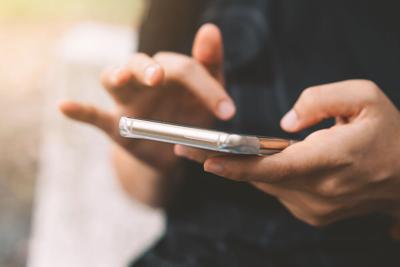OREGON — Threatened with a funding cut, federal agencies dropped the national suicide hotline’s service that was specifically dedicated for LGBTQ+ youth, otherwise known as “Option 3,” in July.
Here in Oregon, some services still exist. LGBTQ+ people who call 988 can still reach counselors that are trained and experienced in supporting queer people. And independently, the organization that staffed most “Option 3” call centers is still taking callers on its own LGBTQ+ hotline.
According to federal data, “Option 3” saw almost 1.3 million callers since it opened in September 2022.
Queer youth are more likely to think about suicide than their peers. One in five LGBTQ+ youth and one in three transgender youths self-report attempting suicide, according to UnclosetedMedia. In 2020, President Trump signed legislation that recognized their greater risk and created “Option 3.”
When a queer person, youth or adult, pressed “Option 3,” their call went to specialized LGBTQ+ crisis centers to speak with trained counselors, who are often queer themselves. Almost half the callers to the LGBTQ+ youth line were served by Trevor Project counselors.
Changes
This spring, the Trump administration moved to cut funding for Option 3 in its 2026 federal budget.
Before that budget passed in early July, the federal Substance Abuse and Mental Health Services Administration (SAMHSA), responsible for the national 988 crisis line, announced it would stop offering Option 3 by July 17.
In an announcement, SAMHSA stated it would “no longer silo LGB+ youth services,” to “focus on serving all help seekers, including those previously served through the Press 3 option.”
Rachel Cauley, the White House Office of Management and Budget’s communications director, told The Hill following SAMHSA’s announcement that the administration would not “grant taxpayer money to a chat service where children are encouraged to embrace radical gender ideology by ‘counselors’ without consent or knowledge of their parents.”
But SAMHSA’s 988 budget stayed the same, at $520 million. Cellphone users in Oregon pay a $0.40 monthly fee that supports 988.
When SAMHSA publicized its decision, the Trevor Project, a nonprofit that provides crisis services to queer folks, announced an emergency funding campaign for continuing some services.
“Suicide prevention is about people, not politics,” Trevor Project CEO Jaymes Black said in a statement. “The administration’s decision to remove a bipartisan, evidence-based service that has effectively supported a high-risk group of young people through their darkest moments is incomprehensible.”
On Sept. 17, U.S. Senators Tammy Baldwin (D-WI) and Lisa Murkowski (R-AK) introduced a bipartisan law to restore and protect Option 3. “Mental health does not see partisan lines or geography, and I’m proud to be working with Democrats and Republicans to do what’s right,” said Baldwin.
Oregon, Washington services
Lines for Life, which handles most Oregon 988 calls, announced July 16 that it’s “disappointed and disheartened” by the loss of a “critical resource,” adding, “We are here for you — and we always will be.”
Marion and Polk callers get northwest Human Services, which provides a variety of health clinics and housing resources too. They still mention Option 3 on their website.
In Washington, three centers answer calls from around the state: Crisis Connections, Frontier Behavioral Health, and Volunteers of America Western Washington. As in Oregon, all receive training in the support of “LGBTQIA2S+ people of all ages.” Washington’s 988 website added a list of queer-centric hotlines after the loss of Option 3.
Maintaining Option 3 cost congress $33 million every year, according to SAMHSA; suicide and self-harm costs the U.S. $510 billion annually, according to studies by Center for Disease Control and Prevention scientists.
LGBTQ+ youth at high risk
According to the Trevor Project, 28,000 LGBTQ youth surveyed were at higher risk of suicide and suicidal ideation, due to their “victimization” for being LGBTQ+.
In 2024, some 39% of queer youth seriously considered suicide, according to the Trevor Project’s annual surveys.
By calling Lines for Life, or the Trevor Project, queer youth can still reach trained counselors who will give them that respect, said Chief Clinical Officer Greg Borders.
“We’re hopeful that the LGBT community will continue to call 988 but they won’t have [Option 3] anymore,” Borders said. “Lines for Life, we’ve been around since 1994 and we’ve always taken a ton of calls from LGBT youth, so we’re very well versed in how best to serve that population.”
All their counselors get “extensive” training on that.
“The specialty lines were created for a purpose ... it tells a specialty population, ‘Hey, if you call this number, you’re going to reach people that are trained to talk with you, people that are empathetic, that are nonjudgmental, and that have heard stories similar to yours. So nothing’s going to surprise them or shock them. They’re there. They are ready and excited to take those calls.
“And so with ‘Press Three’ going away, the worry is that a lot of queer youth will feel that maybe there’s nothing available for them, that 988 doesn’t want to serve them. And that couldn’t be farther from the truth.”
Regardless, calls to Lines for Life are rising.
“Since before the election — we started hearing people more and more worried and concerned and feeling division,” he said. “And I’ve heard people say they feel like they’re being erased ... I want to let people know 988 is still here. Our counselors want to take calls from you. We have the training and that, and the experience and the compassion and the empathy to really be able to take all the calls that come through for us from the queer community. We’re here, we’re ready. We’ve always been here and ready, so that hasn’t changed.”
•••
To support us, subscribe at columbiagorgenews.com.























Commented
Sorry, there are no recent results for popular commented articles.